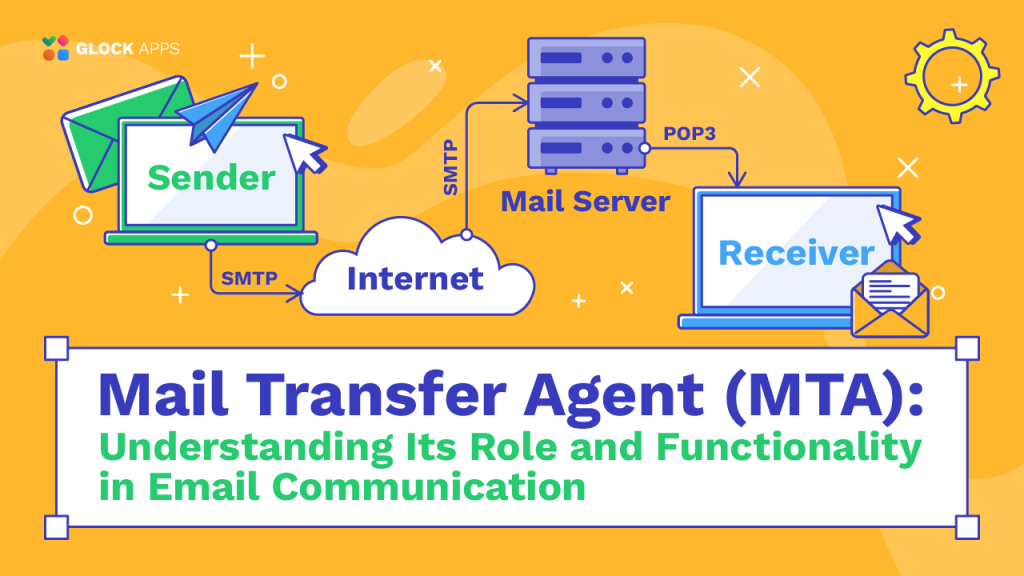Mail Transfer Agent (MTA): Understanding Its Role and Functionality in Email Communication

Estimated reading time: 6 minutes
It is important to understand the mechanisms that make email delivery possible for those who rely on it every day. The Mail Transfer Agent (MTA) is a critical component of the email delivery system. A message transfer agent, mail transport agent, or just MTA is a software that allows email to be sent and received on the internet. In this article, we explain what an MTA is, how it works, and why it is integral to email communication.
What Is a Mail Transfer Agent (MTA)?
A Mail Transfer Agent (MTA) is a crucial piece of software in the email ecosystem. It transfers email messages from one computer to another through the Internet. When you send an email, it does not go straight from your computer to your recipient’s inbox. Instead, it goes through the MTA, which processes the message and transfers it from your email server to your recipient’s. This makes the MTA an essential part of any email system.
How Does an MTA Work?
The operation of an MTA revolves around SMTP (Simple Mail Transfer Protocol), the standard communication protocol for sending emails across networks. Let’s break step-by-step how MTAs work:
- Sending Emails: When you send an email, your email client communicates with the MTA using SMTP. The MTA then takes charge of the message.
- Routing: The MTA checks the domain part of the recipient’s email address and directs the email to the appropriate server. This process might involve multiple MTAs, each passing the email closer to its final destination.
- Delivery: Once the email reaches the MTA on the recipient’s server, it is handed off to a Mail Delivery Agent (MDA), which places the email in the recipient’s mailbox.
- Queue Management: If the destination server is unreachable, the MTA will queue the email and attempt to resend it periodically.
Why Is an MTA Important?
A Mail Transfer Agent (MTA) is a vital part of the infrastructure that underlies email communication. It is not just about sending and receiving messages; it helps keep electronic messaging systems smooth and secure.
1. Reliability:
MTAs are there to handle and correct email errors that might come up during the delivery process, whether in a network or on a server. An email might be sent but might not reach the recipient’s inbox; MTAs will try to resend emails until they are successfully delivered.
2. Security:
MTAs also often incorporate filters that look for spam or viruses in incoming and outgoing messages, thus keeping potentially harmful messages away from you or keeping your messages from possibly harmful users.
3. Scalability:
MTAs are designed to handle different volumes of email traffic. Higher-capacity MTAs are essential in large organizations and at peak times to handle a greater volume without delays or service interruptions.
MTA and Email Deliverability
MTAs play a major role in email deliverability by enabling sender reputation management for the best performance. They help with IP warming, a very important aspect of maintaining a good sending status, especially when sending bulk emails. Configuring the MTA correctly helps to manage the email flow and stay within limits to avoid messages being rejected by the recipient domain. By utilizing MTAs, it is possible to bypass grey lists and set email throttling rules to prevent servers from being blacklisted as spam sources and to preserve the deliverability and email reputation. Maximize your email success with GlockApps, securing consistent inbox placement.
What to Consider When Choosing MTA?
Performance and Scalability: How well does the MTA handle large volumes of email without performance degradation? Scalability is important for any business that expects its flow of email to increase or fluctuate.
Security: Look for an MTA with sophisticated security features, such as built-in spam filters, antivirus protection, and support for email authentication protocols such as SPF, DKIM, and DMARC.
Compatibility: Make sure the MTA will work properly with your existing infrastructure and software systems. In particular, you should test compatibility with different operating systems and any other email-related services you may already have in place.
Ease of Use and Management: Think about how easy it is to configure and manage the MTA. A user-friendly interface and thorough documentation can make administering the MTA a breeze.
Reliability and Support: Pick a more reliable MTA, supported by a highly capable technical support team. This can be crucial when an issue arises.
Cost: Consider the ongoing cost implications, such as the initial setup fee, licensing charges, and additional costs that may arise for upgrades and support services.
MTA vs. MDA
It’s important to differentiate between a Mail Transfer Agent (MTA) and a Mail Delivery Agent (MDA). While the MTA routes the emails across servers, the MDA is responsible for delivering the email to the recipient’s mailbox. Both are essential, but they perform distinctly different roles in the email delivery process.
Conclusion
In conclusion, understanding the intricacies of Mail Transfer Agents (MTAs) is important for anyone relying on email as a primary mode of communication. MTAs not only facilitate the flow of emails across the internet but also improve security, ensure reliability, and manage scalability to accommodate various organizational needs. Whether you’re sending a few emails or millions, the MTA ensures that your messages navigate through the complex web of internet servers to reach their destinations securely and efficiently. Organizations can significantly improve their communication effectiveness and maintain robust email systems by optimizing MTA configurations and choosing the right system based on performance, security, and cost.
GlockApps are always there to help you deliver with no issues whatsoever!
FAQ
An MTA, also known as a mail transport agent or message transfer agent, is software that facilitates the transfer of emails from one computer to another across the internet.
MTAs use SMTP (Simple Mail Transfer Protocol) to route emails from the sender’s to the recipient’s server, ensuring they reach the correct inbox after possibly passing through multiple MTAs.
MTAs ensure the reliability, security, and scalability of email communication. They manage email traffic, filter spam, and correct errors, maintaining smooth and secure messaging systems.
Key factors include performance, security features, compatibility with existing systems, ease of management, reliability, support options, and cost.



